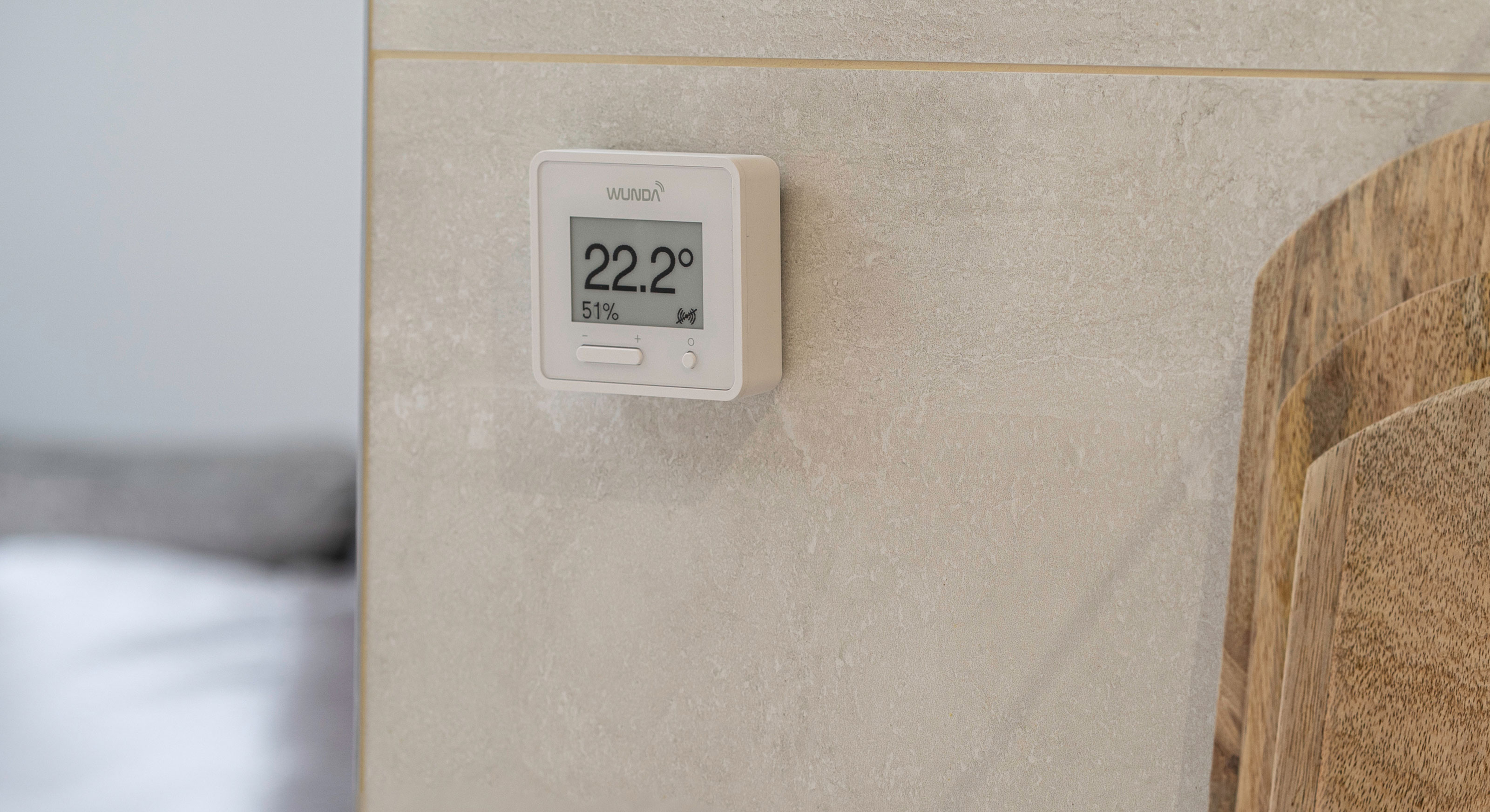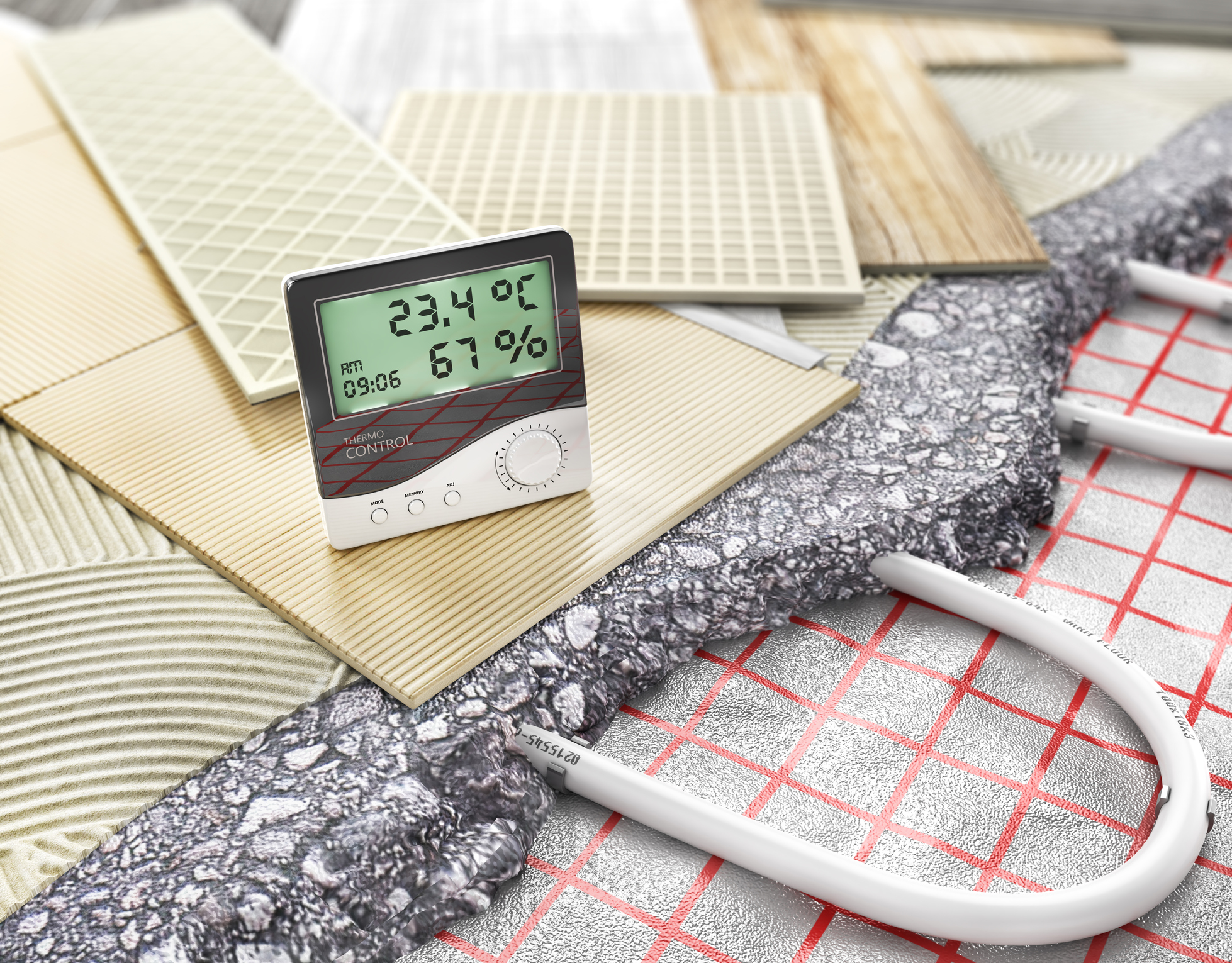Underfloor Heating Thermostats: How to Choose Your Controls
An underfloor heating thermostat is required for both wet and electric systems, ensuring you can control your UFH for a comfortable temperature in your home

Underfloor heating thermostats work in a slightly different way to those used for radiator-based central heating. This allows you to not only have better control of your home's heating, creating a comfortable temperature where you need it, but also reduce the amount of energy wasted, which means your heating bills are smaller too.
There are a few types of controls available for your underflooring heating, including both wired-in and wireless thermostats. There's also a move towards more 'Internet of Things' enabled controls for underfloor heating, meaning that you can control your heating from your phone remotely, set up timers and schedules and even, in some cases, using a smart assistant.
In this guide, we look at the options available to you, where you need to place underfloor heating controls and advise on the best temperatures to set your thermostats to.
How do Underfloor Heating Thermostats Work?
Underfloor heating thermostats work in a number of different ways.
There is usually a room thermostat on the wall that measures the heat in the room. When the thermostat is turned up it will then call for heat to be distributed to the floor in that area. It is quite normal to have a separate thermostat in each area or zone so that the whole property is not being heated up if some zones don’t need additional heat.
Sometimes there will also be thermostats built into the floor to make sure that the floor does not overheat or to make sure that the floor does not get too cold, especially if there is another heat source in the room (such as a log burner or Aga) that could potentially ‘confuse' the room thermostat.
There are also differences in how thermostats work depending on the type of underfloor heating you choose. Electric underfloor heating has a lot of electric wires that are installed in the floor and connected back to the main electrical supply. When switched on, the resistance in the wires causes them to heat up. Electric underfloor heating thermostats will be connected, either hard wired or wireless, back to the switch controller, which will then turn the separate circuits on or off according to demand.
A wet underfloor heating system is one where there are long loops of pipework installed in the floor and warm water is circulated and the heat then transfers from the water to the floor. Underfloor heating thermostats in wet systems are also either wired or wirelessly connected to a controller, but instead of the controller turning a circuit on or off, it will instead open up a motorised valve on the underfloor heating manifold that then allows warm water to flow to that zone.
How Does an Underfloor Heating Thermostat Work?
Underfloor heating thermostats are usually wall-mounted units that can be used to adjust your underfloor heating by simple turn dials, digital push-buttons, touch sensitive screens or via smart devices such as phones or tablets.
The thermostats can be programmed to have different temperatures at different times of the day and also have different requirements on the weekend. Any number of options can be programmed in so that the system is optimised and you are not wasting heat when it is not required.
Wireless thermostats communicate between the room thermostat and the controller via a low power wireless signal. This can be a very good way of adding room by room control to an existing property without the need to chase walls and cause a lot of disruption in order to install wires to every room.
WiFi can then be used to connect your phone or tablet to the controller so that you can then adjust the heating from practically anywhere in the world, so long as there is an internet connection there.
What Features Should I Look for in an Underfloor Heating Thermostat?
Many modern thermostats have a huge array of options with them.
Compatibility with your heating system as well as other temperature control devices is a key feature to look for. You would not want a thermostat on your heating system that could not communicate with the air conditioning system because then as the air conditioning system cooled down the room the heating system may turn on to try and heat it up again.
If you go away a lot you might also want the ability to connect to the home via WiFi.
In an existing home you may also need to connect to motorised radiator valves if you have a mix of wet underfloor heating and radiators. In addition you may also want the system to control a couple of electric underfloor heating zones in a bathroom as well as an electric panel heater. You would then need to specify a control system that can do it all.
Make sure you know what your requirements are, both now and for the future, so that your control system is future proof.

Can I Use Any Thermostat for Underfloor Heating?
Most thermostats are made for specific systems. There are generic products available but they too will be part of their system so you would need to buy the generic thermostat with the generic controls and then connect it to the underfloor heating manifold.
Many smart home systems have the capability to control the heating but it is very important to make sure that the smart home system is indeed fully compatible with your UFH system.
How Much do Underfloor Heating Thermostats Cost?
Thermostats are usually part of a system and should ideally be bought as a system. The only time you would really buy thermostats individually is if you were replacing a damaged one or extending a system.
The cost of individual thermostats will depend a lot on the quality and functionality of the product.
How Many Thermostats do I Need?
As a minimum, you will need one thermostat per zone (not one per room as you may have more than one zone in a large room) but you may add additional thermostats if you have second heat generators such as log burners or Aga type cookers and you need to stop the floor from going cold.
How Can I Control Different Zones with my Underfloor Heating Thermostat?
During underfloor heating installation, pipes or wires will be installed in different areas with separate thermostats. Each zone can be individually controlled via the electronic controls and, in the case of wet systems, the controls then connect back to the manifold to open or close the zones.
Where Should I Position the Thermostat?
Ideally, the thermostat should be positioned in a place where it will be able to sense the average temperature in that area.
It should not be in direct sunlight or in a draughty area. It should also not be placed near any appliances as they can emit heat, which could give false readings to the thermostat.
Wireless thermostats should also not be placed in any area where they cannot communicate with the heating controller, such as in, or behind, metal-lined materials like foil-backed insulation or plasterboard. There is also the risk of communication breakdown where there is another source of wireless interference, such as from a wifi router, mobile phones or sometimes even lighting transformers and dimmers.
What Temperature Should my Underfloor Heating Thermostat be set to?
The temperature that you set your room thermostat at must be the temperature at which you feel comfortable.
It is however worth remembering that as the humidity in the room rises so will your desired room temperature.
Make sure that the property is adequately (but not overly) ventilated and that way the room thermostat can actually be set a bit lower.
Get the Homebuilding & Renovating Newsletter
Bring your dream home to life with expert advice, how to guides and design inspiration. Sign up for our newsletter and get two free tickets to a Homebuilding & Renovating Show near you.
David is a renewables and ventilation installer, with over 35 years experience, and is a long-standing contributor to Homebuilding and Renovating magazine. He is a member of the Gas Safe Register, has a Masters degree in Sustainable Architecture, and is an authority in sustainable building and energy efficiency, with extensive knowledge in building fabrics, heat recovery ventilation, renewables, and also conventional heating systems. He is also a speaker at the Homebuilding & Renovating Show.
Passionate about healthy, efficient homes, he is director of Heat and Energy Ltd. He works with architects, builders, self builders and renovators, and designs and project manages the installation of ventilation and heating systems to achieve the most energy efficient and cost effective outcome for every home.

